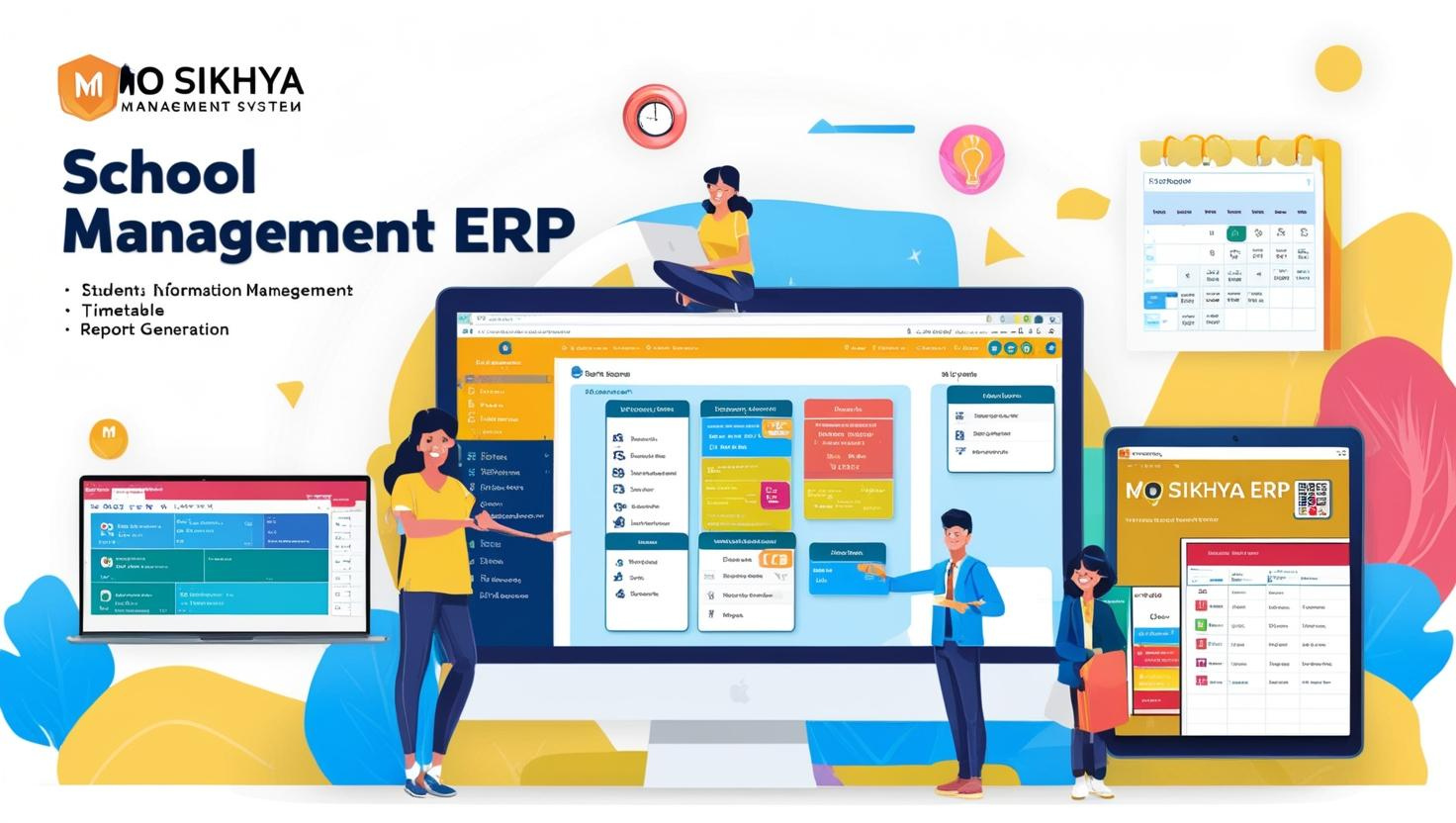School Management System
A School Management System (SMS) is an essential tool for modern educational institutions. It streamlines the administration of academic, administrative, and management tasks, offering a centralized platform for both staff and students. Below is an overview of what a school management system typically covers:
1. Student Information Management
- Student Profiles: A centralized database to store and manage student records, including personal information, academic history, attendance, and performance.
- Admission Process: Simplifies the admission process, from registration to confirmation, along with document uploads and approvals.
2. Academic Management
- Timetable Management: Helps in creating and managing class schedules, ensuring that there are no conflicts and that resources (such as classrooms and teachers) are allocated efficiently.
- Curriculum Management: Allows the creation, modification, and distribution of course syllabi, subject details, and learning materials.
- Grades and Report Cards: The system allows teachers to record grades, create reports, and track student progress. It generates report cards and provides parents with easy access to their child's performance.
3. Attendance Management
- Daily Attendance: Teachers can mark student attendance, whether physical or digital, ensuring accurate records.
- Automated Notifications: Alerts can be sent to parents or guardians when students are absent, helping keep them informed and engaged in their child’s attendance.
4. Exam and Assessment Management
- Exam Schedules and Results: The system schedules exams and tracks student performance across various tests. It generates detailed reports on individual and class-wide performance.
- Assessment Tools: The SMS supports a variety of assessments such as quizzes, assignments, and examinations, and tracks results over time.
5. Fee Management
- Fee Structure and Payments: Tracks student fees, generates invoices, and allows for online payments. It can also offer fee reminders and maintain records of paid and pending fees.
- Discounts and Scholarships: Easily manage discounts, scholarships, or financial assistance programs for eligible students.
6. Communication Tools
- Parent-Teacher Communication: Provides a platform for teachers and parents to communicate about student progress, behavior, and other important matters.
- Announcements and Notifications: Admins can send bulk notifications or messages to staff, students, and parents about events, holidays, or school-related matters.
7. Staff and Teacher Management
- Staff Profiles and Leave Management: Track staff attendance, leaves, and performance. Allows for easy management of teacher schedules, including substitute teacher assignments.
- Payroll Management: The system automates payroll, calculating salaries, deductions, and bonuses, and generating payslips.
8. Library Management
- Book Tracking: Facilitates the management of books, journals, and other educational resources. Students and teachers can check the availability of books, borrow, or return them.
- Cataloging and Reports: Keeps a catalog of all library resources and generates usage reports for efficient library management.
9. Transport Management
- Vehicle Tracking: Helps in managing the school fleet, tracking routes, and ensuring the safety of students during transportation.
- Route Scheduling: Optimizes bus routes, ensuring timely pick-up and drop-off of students.
10. Performance Analytics and Reports
- Dashboard Analytics: Provides a visual dashboard that displays real-time data on attendance, grades, and other key metrics to help school management make informed decisions.
- Custom Reports: Generates various types of reports, such as student performance, financial reports, and teacher effectiveness.
11. Mobile Access
- Mobile App Integration: Many modern school management systems offer mobile apps for students, parents, and teachers, allowing easy access to essential information on the go.
12. Security and Data Privacy
- Role-Based Access Control: Ensures that sensitive information is only accessible to authorized personnel (admin, teachers, parents).
- Data Backup and Recovery: The system provides data backup solutions, ensuring that information is never lost and can be recovered in case of emergencies.
Benefits of a School Management System
- Efficiency: Automates routine administrative tasks, reducing manual work and errors.
- Better Communication: Enhances communication between parents, teachers, and administrators, leading to better collaboration and student development.
- Transparency: Offers easy access to academic progress and other student-related data, ensuring transparency for all stakeholders.
- Time-Saving: Reduces the time spent on paperwork, grading, and administrative tasks, allowing staff to focus more on teaching and student engagement.
In conclusion, a well-designed school management system provides a comprehensive solution for handling day-to-day school operations, improving both administrative efficiency and the quality of education.



